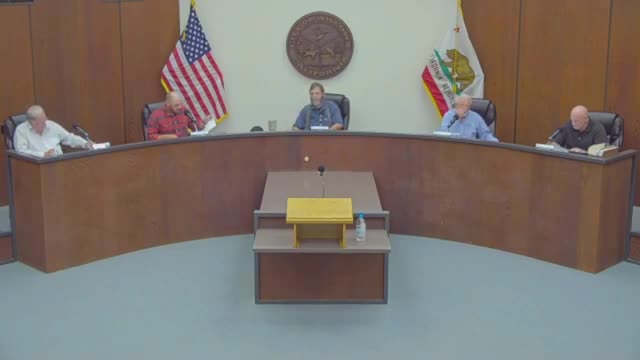CalPERS investment risks threaten public employee pensions
June 28, 2024 | Willows City, Glenn County, California

This article was created by AI summarizing key points discussed. AI makes mistakes, so for full details and context, please refer to the video of the full meeting. Please report any errors so we can fix them. Report an error »

During a recent government meeting, officials discussed the ongoing challenges related to the California Public Employees' Retirement System (CalPERS) and its impact on local pension liabilities. The conversation highlighted concerns over CalPERS' investment strategies, particularly its increasing focus on climate change investments, which some policymakers view as risky and potentially detrimental to the financial security of public employees' pensions.
One official expressed frustration over the perception that CalPERS is treating pension funds like a high-risk investment portfolio rather than a secure retirement plan. They emphasized that when CalPERS experiences investment losses, the financial burden falls on cities and their employees, who ultimately bear the costs of any unfunded liabilities.
The discussion also touched on the historical context of CalPERS funding, noting that the system had previously been over 100% funded but has since shifted to a liability status due to poor investment performance in recent years. Officials indicated that while there is hope for improved returns in the coming year, the long-term solution may lie in the gradual transition to the new pension structure established under the Public Employees' Pension Reform Act (PEPRA) of 2012, which is expected to reduce unfunded liabilities over time.
In addition to pension discussions, the meeting addressed financial matters related to the city's sewer and water enterprise funds. Officials clarified the status of restricted funds within the sewer budget, explaining that certain amounts are earmarked for future capital projects and debt service reserves. They also discussed the financial implications of recent infrastructure improvements, noting that connections to city water pumps funded by American Rescue Plan Act (ARPA) resources are expected to save the city money in the long run.
Overall, the meeting underscored the complexities of managing public pensions and municipal finances, with officials advocating for greater oversight and strategic adjustments to safeguard the financial futures of public employees.
One official expressed frustration over the perception that CalPERS is treating pension funds like a high-risk investment portfolio rather than a secure retirement plan. They emphasized that when CalPERS experiences investment losses, the financial burden falls on cities and their employees, who ultimately bear the costs of any unfunded liabilities.
The discussion also touched on the historical context of CalPERS funding, noting that the system had previously been over 100% funded but has since shifted to a liability status due to poor investment performance in recent years. Officials indicated that while there is hope for improved returns in the coming year, the long-term solution may lie in the gradual transition to the new pension structure established under the Public Employees' Pension Reform Act (PEPRA) of 2012, which is expected to reduce unfunded liabilities over time.
In addition to pension discussions, the meeting addressed financial matters related to the city's sewer and water enterprise funds. Officials clarified the status of restricted funds within the sewer budget, explaining that certain amounts are earmarked for future capital projects and debt service reserves. They also discussed the financial implications of recent infrastructure improvements, noting that connections to city water pumps funded by American Rescue Plan Act (ARPA) resources are expected to save the city money in the long run.
Overall, the meeting underscored the complexities of managing public pensions and municipal finances, with officials advocating for greater oversight and strategic adjustments to safeguard the financial futures of public employees.
View full meeting
This article is based on a recent meeting—watch the full video and explore the complete transcript for deeper insights into the discussion.
View full meeting
